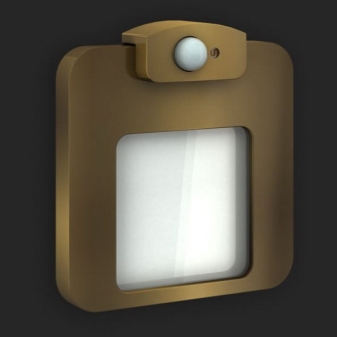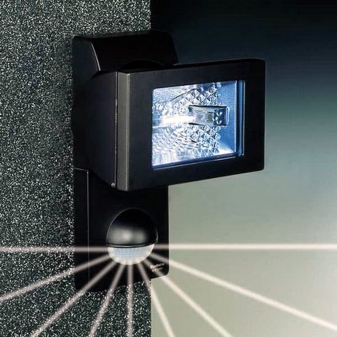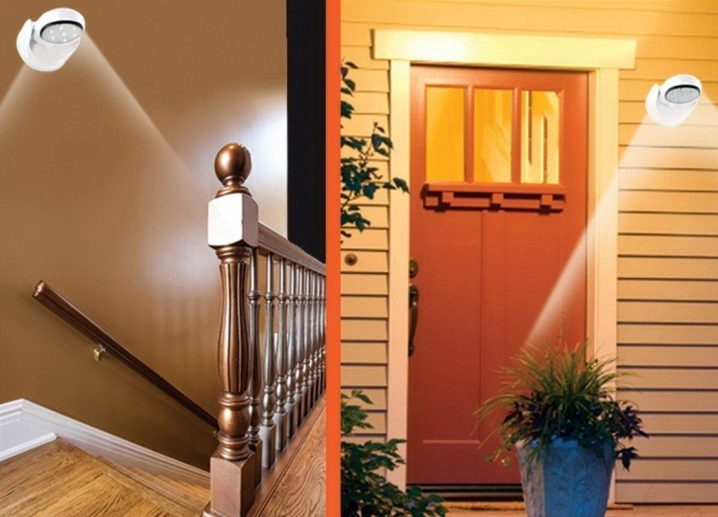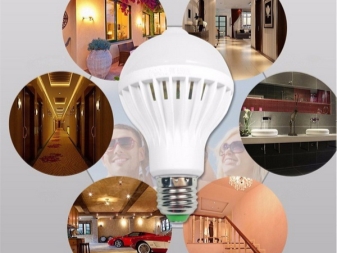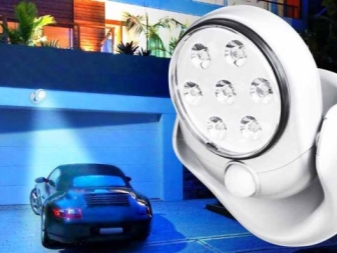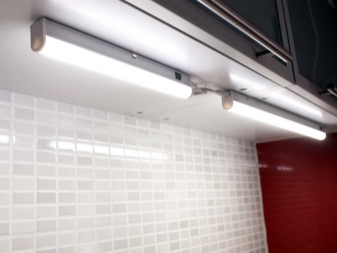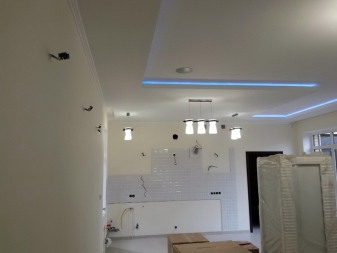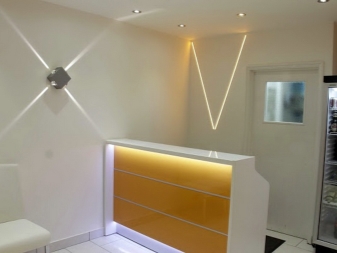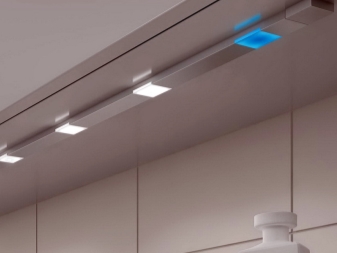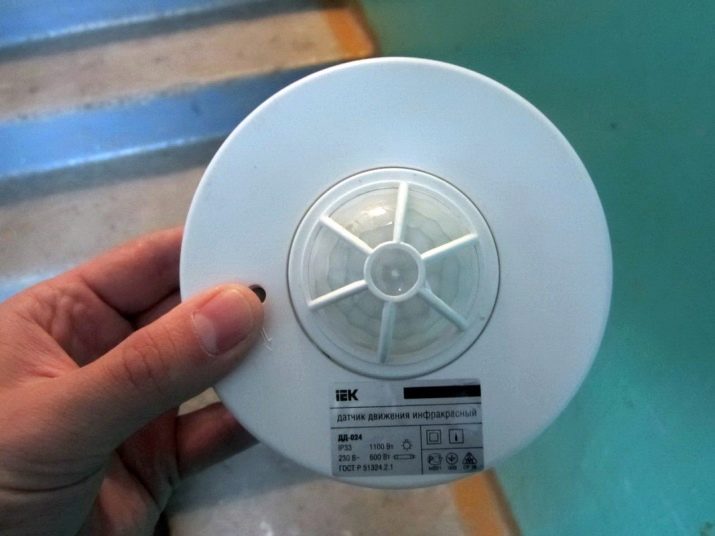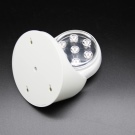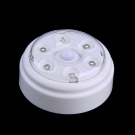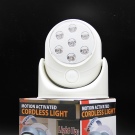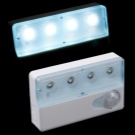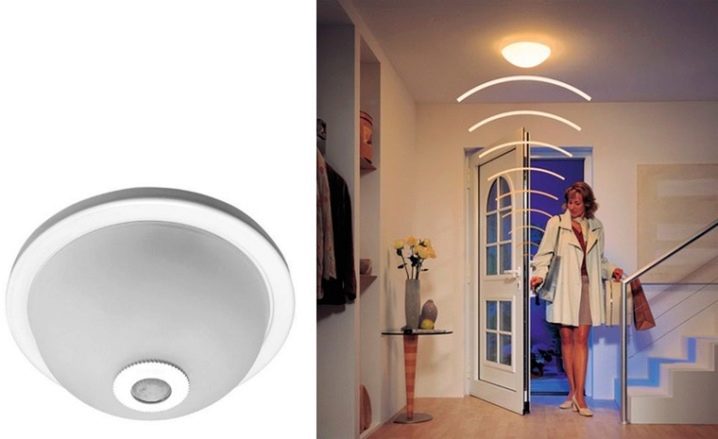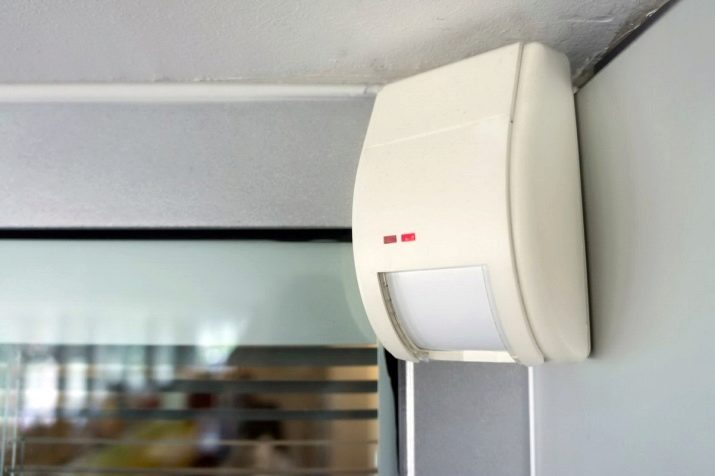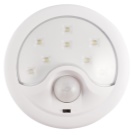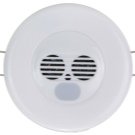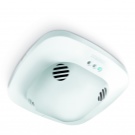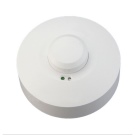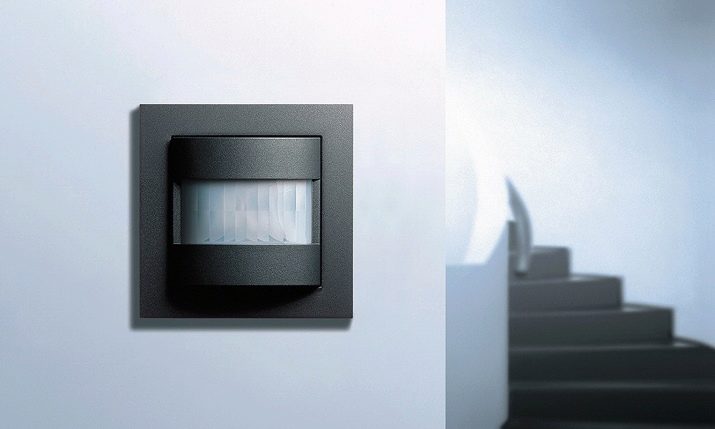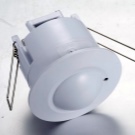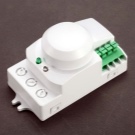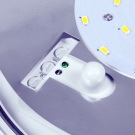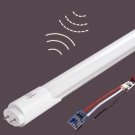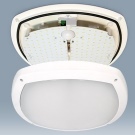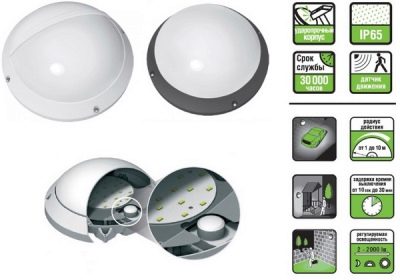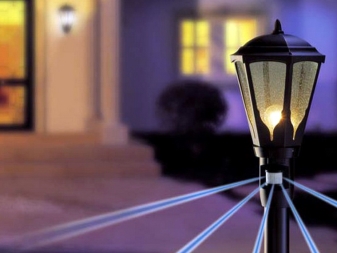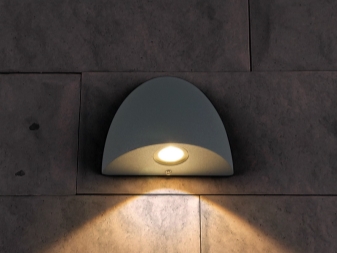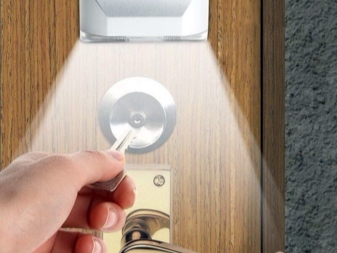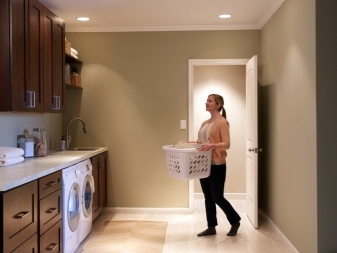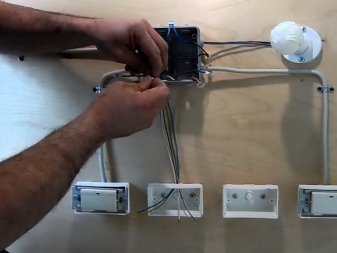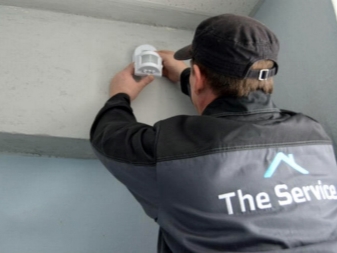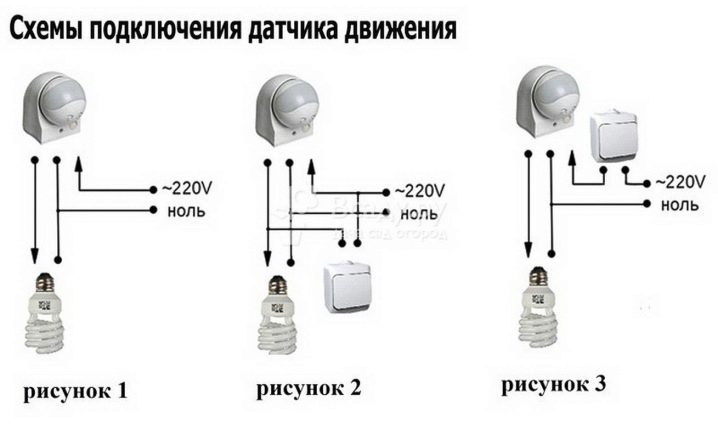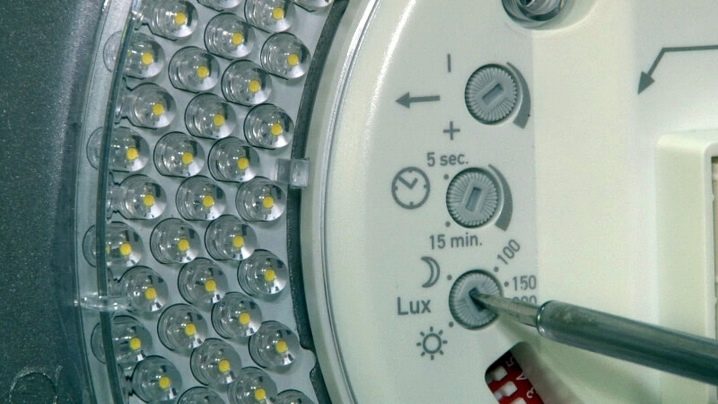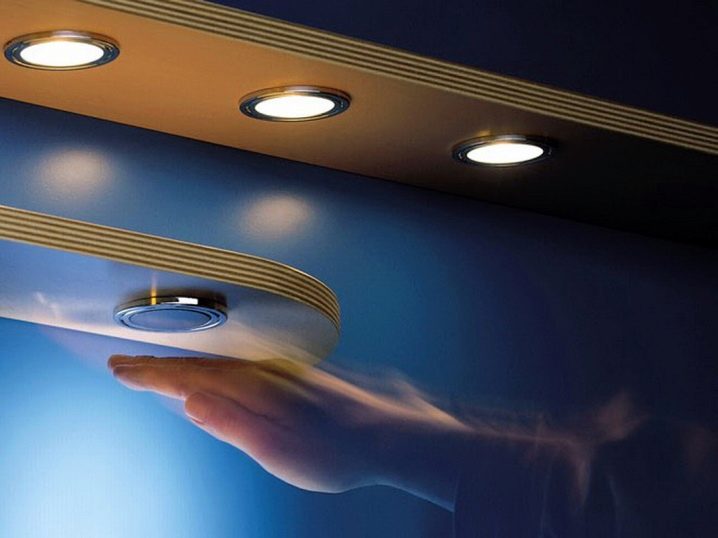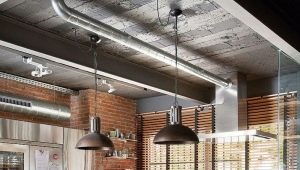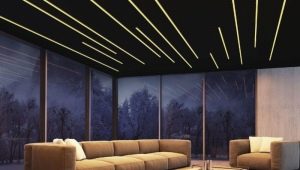Lamps with motion sensors
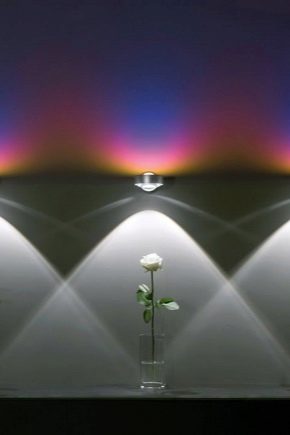
Lighting at home is one of the most important factors, as it is with its help organize work and rest in the evening. Today, to solve such problems they use many design and technical solutions. This allows you to create not only practical, but also a beautiful lighting system. Increasingly in homes there are lamps with motion sensors, lighting. They simplify the management of the lighting system and make it more practical.
How does it work?
The lamp with a motion sensor can be both separate and connected device. The signal receiver itself is quite simple. It consists of several main parts:
- External sensor There are different types of data elements, it all depends on the type of received signals.
- Internal analyzer. Often this is a special system that measures the voltage on the sensor itself.
- The switch. The design assumes the presence of several terminals responsible for turning on the light bulb.
The principle of operation of this type of lamp can be described in several successive steps:
- Initially, the sensor is adjusted to a certain sensitivity. This may change not only the lighting. Some models operate on the principle of ultrasound sonar.
- When movement occurs within the sensor's range, the LED indicators or other systems responsible for signal reception change. This leads to a change in current or voltage.
- Changes in the previously described characteristics are fixed by a special differentiating scheme. It makes the switch work, with which the light comes on.
At the same time, sensors can be tuned to different modes (outdoor and others).
Benefits
Luminaires with a motion sensor are universal mechanisms that are very useful and functional. These designs have several advantages:
- Practicality. The designs are distinguished by simplicity and originality.Lamps can be used both on the street and inside the house. At the same time, they can be adapted to almost any weather conditions.
- Convenience. Automatic turning on of light occurs even in complete darkness. This allows not to look for a switch.
- Efficiency. This feature is the most significant advantage that distinguishes these lamps from other types. At the same time, the level of savings can be significant. As for failures, the cases when the light is not turned off, are very rare.
Kinds
Lamps of this type can be classified according to several criteria. Devices are of several types (depending on the type of sensor):
- Infrared. Devices of this type react to temperature changes indoors or at a certain distance from the sensor. It is based on the fact that a person emits heat, which the sensor perceives.
Systems are completely safe for health, so they are used very often.
It should be noted that such a lamp can even work on an inanimate object that is heated to a certain temperature. If a person is dressed in thick clothes or in several layers, then behind her the sensor will not be able to catch the heated body.
- Ultrasound. The operation of the system is based on the emission of a signal, which is then received by the sensor. Among the advantages of such lamps can be identified low cost, the ability to respond to a person, regardless of the type of clothing. These systems work well in conditions of high humidity and in the presence of dust.
However, these sensors can affect the well-being of domestic animals, as they capture ultrasound. Sensors work only at short distances and during sudden movements.
- Microwave The sensors are based on high-frequency electromagnetic waves. It uses the same principle as for ultrasonic luminaires. Waves, reflected from a moving surface, change the current indicators in the sensor.
Structures of this type can catch movement even through a thin door. However, their work does not depend on the ambient temperature. The cost of these products is quite high, which does not allow to apply them everywhere. Frequent exposure may adversely affect human health. Lamps of this type are used in areas where movement of people is restricted (the organization of safe zones, and so on).
One of the classification criteria for fixtures is their placement.. There are several types of devices:
- Wall mounted. Structures are mounted on vertical surfaces. Such models can be designed for both home and street. Wall lights are most often complemented by infrared sensors.
- Ceiling. The luminaires have a flat shape. They are usually mounted in toilets or in bathrooms. Here they are equipped with ultrasound systems.
- Autonomous. Devices of this type are equipped with batteries, which allows you to install them in a variety of places. They can be both external and internal. Often they are used to organize the lighting inside the closets or walk-in closets.
How to choose?
Almost all types of lamps can be supplemented with motion sensors. Only a certain group is already produced with sensors mounted inside. When buying such a device, you should evaluate several parameters:
- Type of lamp. The luminaires are complemented by several types of lighting devices - from halogen bulbs to LED strips.Each of them has unique characteristics of electricity consumption and a spectrum of light radiation. If profitability is important to you, give preference to LED designs.
- Sphere of use. Many fixtures are home use systems. If the structures are supposed to be mounted in the open air, then they should be protected from the influence of external factors. In most cases, they are supplemented with special protective shells.
- Connection method. Stationary models require electrical wiring. If you need autonomy, then you should buy lamps with batteries.
- Sensor type. Types of sensors and their advantages were discussed earlier. At the same time, it is also advisable to evaluate the place where the installation of the lighting device is planned.
- Design. This parameter is important when appliances need to fit into a specific type of interior. There are many types of fixtures on the market today that will fit into both high-tech and classic styles.
Connection
The installation of luminaires with motion sensors is a relatively simple operation that can be done by hand. It's as simple as setting up Wi-Fi.There are several electrical circuits that allow you to connect the device. The simplest option is the installation of lamps, which are equipped with built-in sensors. To install the lamp, you must perform several sequential operations:
- Initially, you should choose a place where the device will be located. It is important that the sensor covers the areas where you are constantly moving. Often he should have been sent to the door.
- After that to the place of installation bring the wiring from the box. Phase and zero are connected to the luminaire using special terminals or clamps. It is important to follow the scheme specified by the manufacturers.
If you supplement a conventional lamp with a motion sensor, then the connection algorithm is slightly different. First set the lighting device. It can be placed almost anywhere in the room. Then a place is chosen for mounting the sensor. Then to it bring the zero and phase cables, which are connected to the input terminals. After that, 2 output cables are also removed from the sensor. They are fixed with special clips.The process is completed by connecting the luminaire using output wires. The mounting scheme corresponds to the installation of the light bulb. This option does not allow to control the process of turning off the light, as it is regulated automatically. For this there is a wiring diagram with a switch. To accomplish this, a switch is connected to the sensor in parallel.
How to adjust?
Setting the sensor provides the ability to change certain parameters that affect its sensitivity. There are several possible modes that can be adjusted:
- Time. This parameter indicates how long the light stays on. The maximum value is 600 seconds. To change this characteristic, turn the “Time” knob to the desired position.
- Illumination. This characteristic is responsible for when the light sensor will work. For this function is responsible for the switch "LUX", which must also be turned in the right direction.
- Sensitivity. This is one of the most important characteristics, which is responsible for the conditions under which the sensor will turn on. You can also configure this parameter using a special pen.To do this, make a normal turn clockwise or against it.
To obtain the optimal value can be experimentally. Do not try to make the sensor too sensitive, as it will work with the slightest movement. It will not be very convenient. Lamps with motion sensors are unique technical solutions that complement the sophistication and style of modern functionality. You will not be disappointed in such a device.
Review the lamp with a motion sensor, see the following video.
